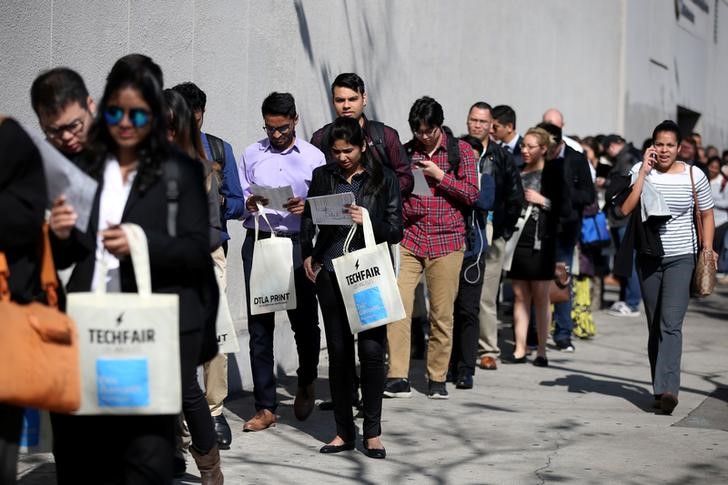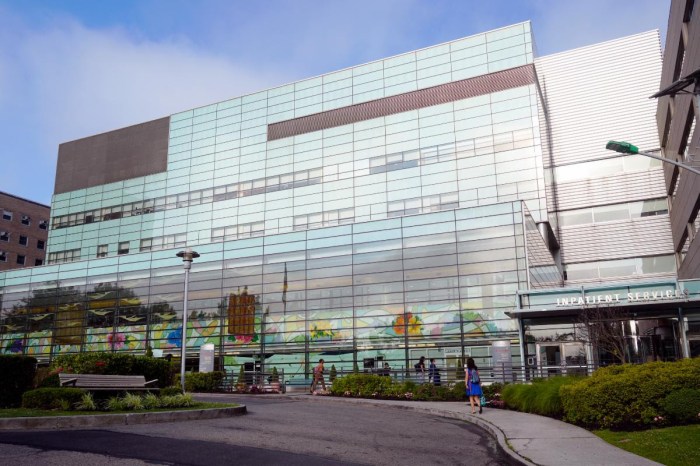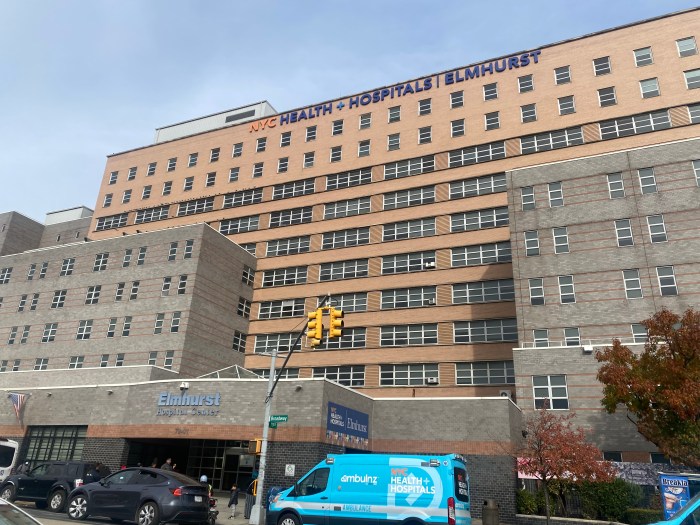BY LUCIA MUTIKANI
The number of Americans filing for unemployment benefits surged by the most since 2012 to a 2-1/2-year high last week, as companies in the services sectors laid off workers because of the coronavirus pandemic.
The deterioration in the most timely labor market indicator, reported by the Labor Department on Thursday, offered a glimpse of what lies ahead as the country struggles to curb the spread of the highly contagious virus, which has upended life for Americans. Economists are expecting a recession by the second quarter, though some believe a downturn is already underway.
The coronavirus has crippled the transportation, leisure and hospitality industries, as well as the manufacturing sector.
“Today’s jobless claims data provide the confirmation, if it was needed, that the economy has just fallen over the cliff and is turning down into a recession,” said Chris Rupkey, chief economist at MUFG in New York. “Spending and jobs in the economy won’t come back until the virus counts of positive cases level out and people are once again free to roam the streets, frequent shops, bars and restaurants.”
Initial claims for state unemployment benefits jumped 70,000 to a seasonally adjusted 281,000 for the week ended March 14, the highest level since September 2017. Last week’s rise was the largest since November 2012. Economists polled by Reuters had forecast claims would increase to 220,000. There was a sharp rise in unadjusted claims for California and Washington state, which are among the states with the most coronavirus infections.
The Labor Department attributed the surge to COVID-19, the respiratory illness caused by the coronavirus.
“A number of states specifically cited COVID-19 related layoffs, while many states reported increased layoffs in service related industries broadly and in the accommodation and food services industries specifically, as well as in the transportation and warehousing industry, whether COVID-19 was identified directly or not,” it said.
Economists expect jobless claims to accelerate to more than 1.0 million when this week’s data is published next Thursday, citing figures from their own tracking of individual states.
The coronavirus outbreak has forced millions of Americans to hunker down in their homes, with state and local governments closing schools, bars, restaurants and theaters in an escalation of “social distancing” policies aimed at containing the virus.
Ford Motor Co <F.N>, General Motors Co <GM.N> and Fiat Chrysler Automobiles NV <FCHA.MI> <FCAU.N> have announced temporary plant closures.
The death toll in the United States from COVID-19 has topped 150 and about 9,000 people are infected, according to a Reuters tally. Nearly 9,000 people have died across the globe and about 219,000 have contracted the disease.
Health experts, however, say the figures are much higher given that testing is not readily available in many countries, including the United States.
The U.S. Federal Reserve aggressively cut interest rates to near zero on Sunday, and pledged hundreds of billions of dollars for asset purchases and to backstop foreign authorities with the offer of cheap dollar financing.
The Trump administration is pushing for a $1 trillion stimulus package, which Treasury Secretary Steven Mnuchin urged the U.S. Congress to pass by early next week.
The U.S. central bank has also taken additional measures, including opening the taps for central banks in nine new countries to access dollars on Thursday.
Stocks on Wall Street were trading higher, though investors still worried actions taken by governments and central banks could be insufficient to avert a global recession. The dollar <.DXY> rose to more than a three-year high against a basket of currencies. U.S. Treasury prices were higher.
U-SHAPED RECOVERY?
Economists say the upcoming recession in the United States is most likely to assume a U-shape. JPMorgan on Wednesday estimated that first-quarter gross domestic product would contract at a 4.0% annualized rate followed by an even steeper 14.0% decline in the second quarter.
It forecast the economy would contract 1.8% this year and the unemployment rate would rise to 5.3% from 3.5% now.
“The fact that the unemployment rate ends the year substantially higher than the current level should make clear why it would not be accurate to describe this as a V-shaped recovery,” JPMorgan economist Michael Feroli said. “Even with a strong third-quarter (growth), that strength is not nearly enough to undo the expected damage to the labor market.”
That grim forecast was buttressed by a report from the Philadelphia Fed on Thursday showing its business conditions index plunged to a reading of negative 12.7 in March, the weakest since July 2012, from 36.7 in February.
The survey’s measures of new orders at factories in the region that covers eastern Pennsylvania, southern New Jersey and Delaware plunged to -15.5 this month from a reading of 33.6 in February. Labor market conditions also softened this month.
The claims data covered the period during which the government surveyed business establishments for the nonfarm payrolls component of March’s employment report.
Claims increased 66,000 between the February and March survey periods, supporting economists’ views of slower job gains or even losses this month.
The economy created 273,000 jobs in February, matching January’s tally, which was the largest gain since May 2018. Labor market strength has been the main driver of the longest economic expansion on record, now in its 11th year.
The U.S. Travel Association estimated this week that the coronavirus outbreak could eliminate 4.6 million travel-related jobs in the country this year. Projections from the National Restaurant Association were even dire, with the lobby group predicting the industry could lose 5 million to 7 million jobs over the next three months.
“The speed and breadth at which economic activity is grinding to a halt is anything but average,” said Sarah House, a senior economist at Wells Fargo Securities in Charlotte, North Carolina. “The U.S. economy appears to be quickly catapulting into a recession.”




































